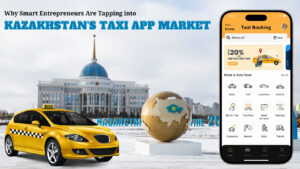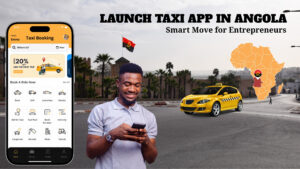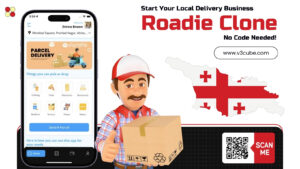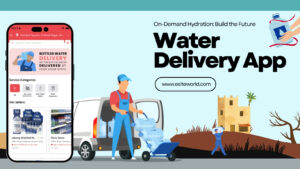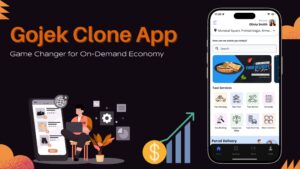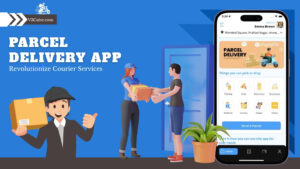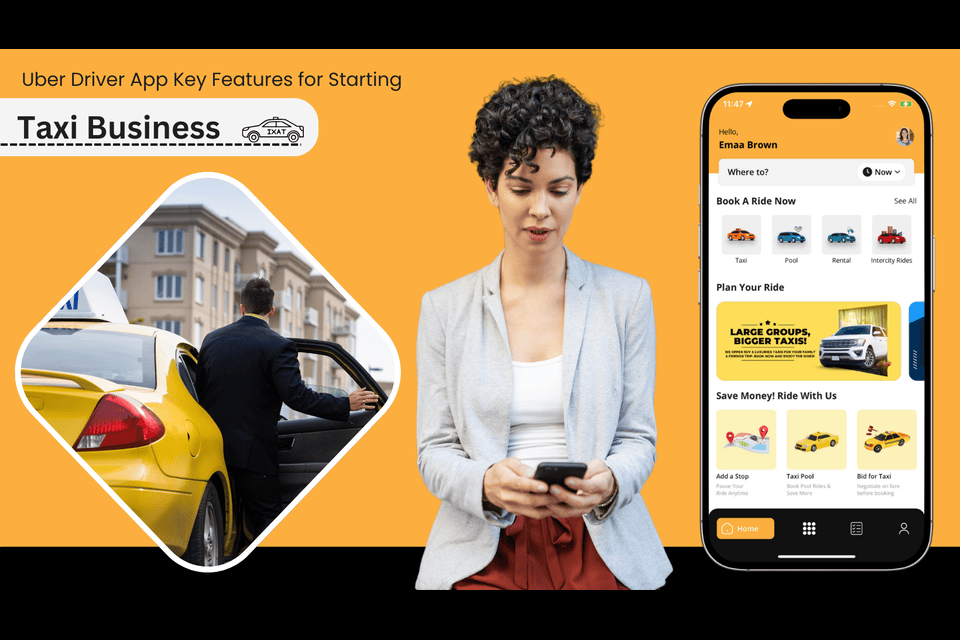
The world of getting taxi rides has seen the evolution of communication platforms, and the Uber driver app is the frontrunner among them. Apparently, it has a lot to do with the business’s online reach. Today, you’ll be looking behind the scenes to see some hidden features in the Uber driver app so you can implement them in your taxi booking app as well.
Introduction
In the busy world of ride-hailing, Uber has changed how people think about getting from one place to another. But have you ever wondered what happens behind the scenes, especially for the drivers? If you’re starting a taxi booking app business, knowing about these hidden gems can give you an edge and spark new ideas for your own app.
So, get ready as we take a trip through the secret world of Uber’s driver app, looking at five features that are changing things for drivers and riders alike. But before we reveal these secrets, let’s take a moment to understand what an Uber driver app is and why it’s so important in today’s ride-sharing world.
What is an Uber driver app?
First, let’s talk about what an Uber driver app really is. Think of it as a tool that does many things for drivers it’s how they get rides, locate pick-up and drop-off places, take payments, and more. It’s the link between the digital world of ride requests and the real roads. Moreover, it’s like a digital control center for drivers, helping them manage their work well and easily.
However, the Uber driver app is more than just a simple screen for accepting rides. It’s a complex system that uses new technology to create a smooth experience for both drivers and riders. From real-time GPS tracking to smart ride matching, the app is always working behind the scenes to keep the ride-sharing business running smoothly.
Top 5 Features of Uber Driver App for Taxi Drivers
Now that we’ve set the stage let’s uncover the five hidden Uber driver app features that are changing how drivers work and making the ride-sharing experience even better.
1. End-of-the-Day Trips
This feature helps drivers get one last ride on their way home. They put in where they’re going last, and the app finds riders going that way, maybe their home, a favorite food place, or anywhere else. The app then does its magic, matching the driver with riders who are going in the same general direction.
Lining up rides with the driver’s planned route makes things more efficient and uses less gas, which is good for both the driver’s wallet and the earth. It’s like having a personal helper who knows exactly how to make the last drive home pay off, which is good for everyone: drivers make more money, and riders find rides when they’re hard to get.
If you’re starting your own business, think about how you could build on this idea. Your app could learn from a driver’s usual routine and suggest end-of-day trips based on their normal schedule. Or perhaps you could add a feature that lets drivers set multiple “endpoints” throughout their day, making their whole route as efficient as possible.
2. Back-to-Back Trips
In the world of taxi booking, time is money. That’s where the “Back-to-Back Trips” feature comes in, changing the way drivers handle their time between rides. This feature lets drivers set up their next ride before dropping off the person they’re driving now. Less waiting time means more earning time.
But the magic of back-to-back trips goes beyond just saving time. They also help create a smoother and more efficient transportation network. By reducing the number of empty cars on the road, they help ease traffic jams and lower the overall impact of ride-sharing services on the environment.
As you think about your own taxi booking app, how could you take this idea even further? You could use a smart system that predicts busy areas and guides drivers there for their next back-to-back trip. Or perhaps you could develop a feature that lets drivers “chain” multiple rides together, creating the best routes for a series of pickups and drop-offs.
3. Request Pickup Area Photo
The “Request Pickup Area Photo” feature is Uber’s answer to this common frustration, and it shows how small improvements can make a big difference. When a driver is having trouble finding the exact pickup spot, they can tap a button to ask for a photo of the pickup area from the rider. This visual help can be a lifesaver in busy city areas, at big events, or in any situation where normal navigation isn’t enough. It’s a small thing that can help a lot, especially in busy places or at night.
But this feature isn’t just about making things easier – it’s about building trust and improving communication between drivers and riders. By providing this extra bit of information, it helps reduce cancellations due to location problems. It creates a smoother, more positive experience for everyone involved.
As a business starter, how could you expand on this idea? You could test the demo of an Uber Clone app, or you could develop a feature that uses machine learning to recognize and highlight common pickup locations based on past data. The first one sounds better.
4. Counter the Ride Fare
Also called the “taxi bidding” feature, the app brings the idea of offering different prices to reality. It adds a bit of back-and-forth to the mix where talking about prices is normal, thereby bringing this old practice into the digital age and adding an interesting twist to the ride-hailing experience.
Here’s how it works: When a driver receives a ride request, they can offer a different price for the ride. This starts a bidding process where multiple drivers can submit their prices for the trip. The rider then has the power to choose the offer that works best for them, whether it’s the lowest price, the highest-rated driver, or the closest car.
This feature brings free-market thinking into the ride-sharing process, allowing for more flexible pricing based on real-time supply and demand. It can be especially useful during busy hours or in areas with few transportation options.
5. Reward Program: Driving Towards Being the Best
Last but not least, we have the driver reward program a feature that turns good service into real benefits for drivers. Everyone likes to be told they did a good job, right? This program turns good work into real rewards for drivers. Think of it like moving up levels in a game but with real-world prizes.
This innovative system goes beyond simple star ratings, creating a more complete approach to recognizing and encouraging quality service.
Here’s how it typically works: Drivers can earn badges and move up through various levels based on how well they do. This includes things like the number of trips completed, customer ratings, and following safety rules. As drivers move up through these levels, they unlock various perks and rewards, which might include first access to busy areas, chances to earn more, or credits in their in-app wallet.
But the real genius of this feature is in how it makes driving feel like a game. By setting clear goals and offering visible rewards, it encourages drivers to consistently provide high-quality service. This, in turn, leads to happier riders, more repeat customers, and a stronger overall brand for the ride-sharing service.
Conclusion
As we’ve journeyed through these five hidden Uber driver app features, it’s clear that the world of taxi app development is far more complex and innovative than it seems at first glance. For people starting taxi booking app businesses, these features offer valuable insights and inspiration. Thus, it’s time to look at top Uber Clone apps by professional white-label firms to develop your own taxi booking app. Who knows? The next big change in ride apps might just come from you. So keep trying new things, and happy creating!
